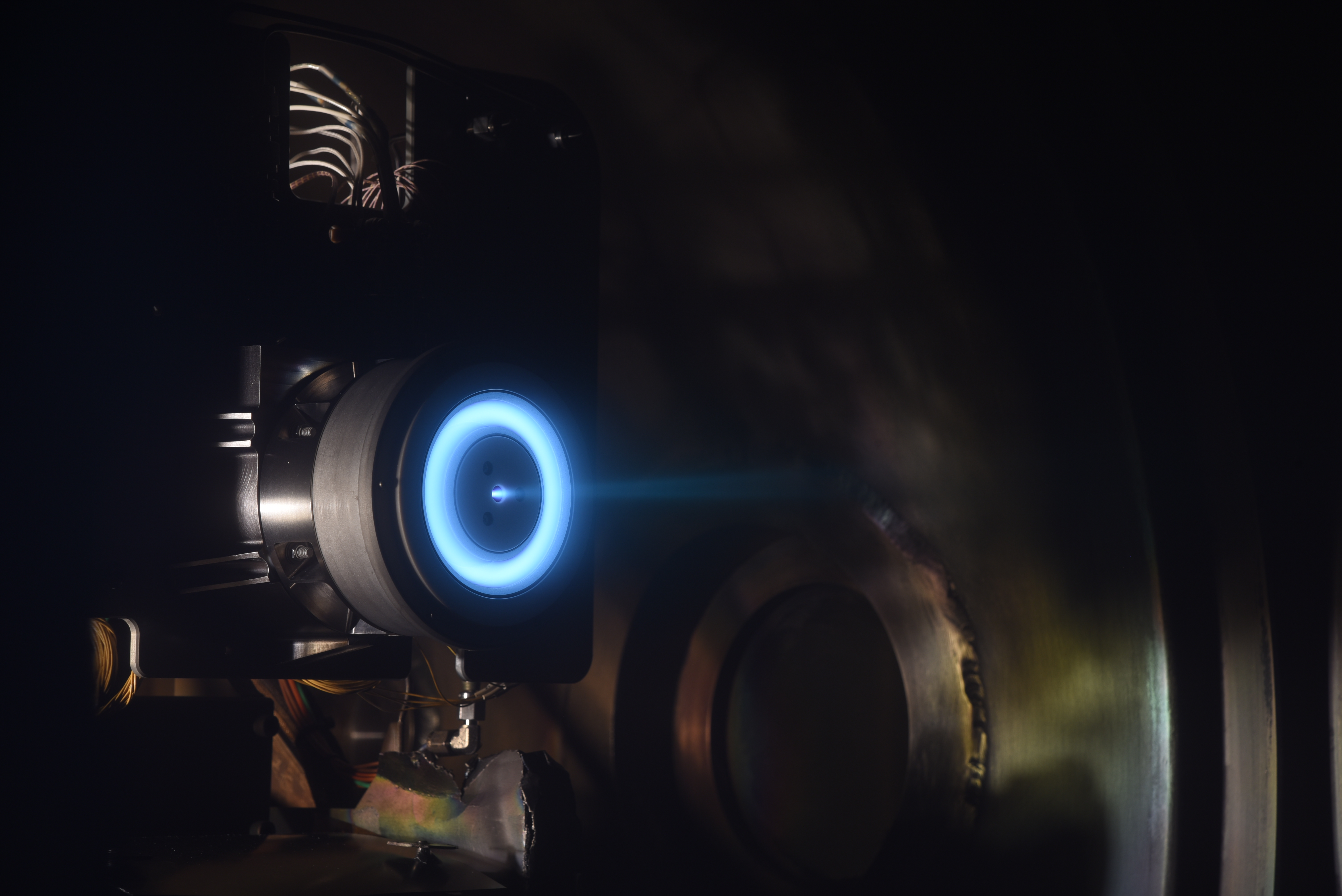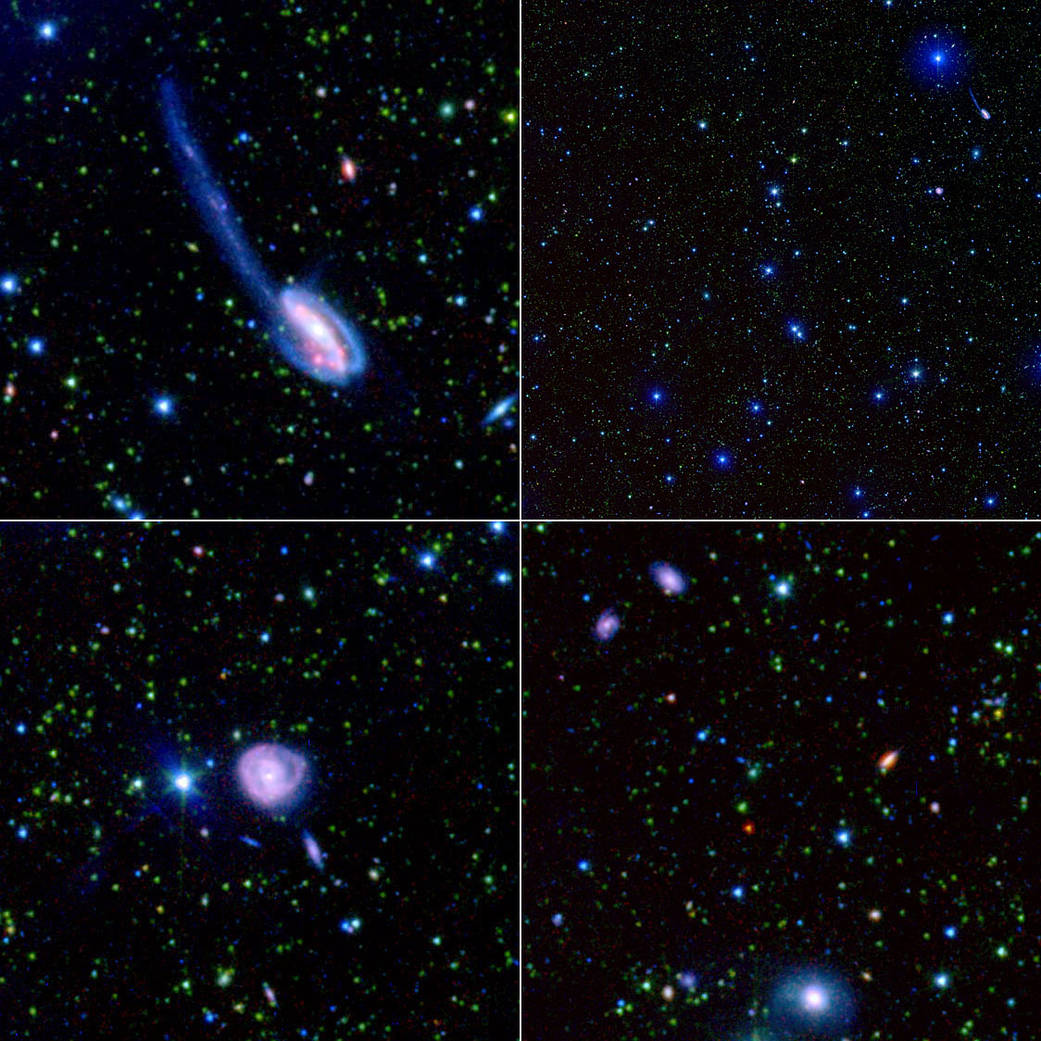These images were taken by the Spitzer Wide-area Infrared Extragalactic Legacy project, which encapsulates one of the primary objectives of the Spitzer mission: to connect the evolution of galaxies from the distant, or early, universe to the nearby, or present day, universe.
The Tadpole galaxy (top left) is the result of a recent galactic interaction in the local universe. Although these galactic mergers are rare in the universe’s recent history, astronomers believe that they were much more common in the early universe. Thus, the project’s team members will use this detailed image to help understand the nature of the “faint red-orange specks” of the early universe.
The top right image depicts one-sixteenth of the survey field called ELAIS-N1. The bright blue sources are hot stars in our own Milky Way, which range from 3 to 60 times the mass of our Sun. The fainter green spots are cooler stars and galaxies beyond the Milky Way whose light is dominated by older stellar populations. The red dots are dusty galaxies that are undergoing intense star formation. The faintest specks of red-orange are galaxies billions of light-years away in the distant universe.
The bottom left figure features an unusual ring-like galaxy, called CGCG 275-022. The red spiral arms indicate that this galaxy is very dusty and perhaps undergoing intense star formation, which could have been initiated by a near head-on collision with another galaxy.
The most distant galaxies that SWIRE is able to detect are revealed in a zoom of deep space (bottom right). The colors in this feature represent the same objects as those in the larger field image of ELAIS-N1.Image Credit: NASA/JPL-Caltech
2 min read


























